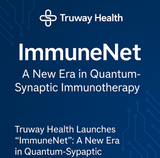Exploring the Potential of Regenerative Medicine
In recent years, the field of regenerative medicine has emerged as a beacon of hope, promising revolutionary advancements in healthcare. Through the use of stem cells, tissue engineering, and other cutting-edge techniques, regenerative medicine aims to restore, repair, or replace damaged tissues and organs, opening new possibilities for the treatment of various diseases and injuries. In this blog post, we will delve into the fascinating world of regenerative medicine, exploring its potential and the incredible impact it may have on the future of healthcare.
Understanding Regenerative Medicine
Regenerative medicine is a multidisciplinary field that combines biology, genetics, tissue engineering, and stem cell research. It focuses on harnessing the body's natural healing capabilities to restore or replace damaged tissues and organs. By using stem cells, which have the unique ability to differentiate into different cell types, scientists can cultivate specific tissues and organs in the laboratory for transplantation or stimulate the body's own cells to regenerate and repair themselves.
Applications in Tissue Engineering
One of the key areas where regenerative medicine shows great promise is in tissue engineering. Scientists are working tirelessly to develop artificial tissues and organs that can be used to replace damaged ones. Through a combination of biomaterials, scaffolds, and cell cultures, they are creating a framework that mimics the natural environment required for cells to grow and develop into functional tissues. Imagine a future where patients in need of organ transplants can receive lab-grown organs, eliminating the need for long waiting lists and reducing the risk of organ rejection.
Harnessing the Power of Stem Cells
Stem cells are undifferentiated cells with the incredible ability to transform into different cell types in the body. They can be derived from various sources, including embryos, adult tissues, and even reprogrammed cells. Stem cells offer immense potential in regenerative medicine by providing a source of cells that can be directed to regenerate damaged tissues and organs. They can be used to treat conditions such as spinal cord injuries, heart disease, and degenerative disorders like Parkinson's and Alzheimer's disease. However, ethical considerations and scientific challenges still need to be addressed to ensure their safe and effective use.
Advancments in Gene Therapy
Regenerative medicine goes hand in hand with gene therapy, which involves modifying or replacing faulty genes to treat genetic diseases. By introducing functional genes into cells, scientists can correct genetic mutations and restore normal cellular functions. This approach holds great promise for conditions such as cystic fibrosis, muscular dystrophy, and certain types of cancer. Additionally, gene editing techniques like CRISPR-Cas9 have revolutionized the field by providing precise tools to edit genes and potentially eliminate disease-causing mutations altogether.
Clinical Applications and Future Outlook
While regenerative medicine has already shown promising results in preclinical and early clinical trials, it is important to note that widespread implementation is still on the horizon. Safety, efficacy, and regulatory considerations pose significant challenges that must be overcome. However, the potential benefits are too significant to ignore. As research continues, we can anticipate breakthroughs in the treatment of degenerative diseases, wound healing, organ transplantation, and even personalized medicine tailored to an individual's unique genetic makeup.
Regenerative medicine is an exciting frontier in healthcare that holds the promise of transforming how we treat and heal the human body. With ongoing advancements in stem cell research, tissue engineering, and gene therapy, the potential for regenerating damaged tissues and organs seems within reach. While there are still challenges to overcome, the prospects for improving the quality of life for countless individuals are profound. As researchers, scientists, and healthcare professionals continue to push the boundaries of regenerative medicine, we can look forward to a future where debilitating diseases and injuries may no longer be irreversible, but rather opportunities for regeneration and restoration.
References:
- Atala, A., & Murphy, S. V. (2013). Regenerative medicine in urology. Scientific American, 309(3), 60-65.
- Trounson, A., & McDonald, C. (2015). Stem cell therapies in clinical trials: progress and challenges. Cell Stem Cell, 17(1), 11-22.
- Langer, R., & Vacanti, J. P. (1993). Tissue engineering. Science, 260(5110), 920-926.
Truway Health News & Insights
Breathe, Refuel, Recharge: Finding Your Daily Balance
Written by Perry JohanssenPublished and Edited by Truway Health Life rarely slows down on its own. B...
Truway Health Launches “ImmuneNet”: A New Era in Quantum-Synaptic Immunotherapy
Reimagining How Immunity Can Be Understood and Guided At Truway Health, innovation never sleeps.Toda...
Announcing the HEALTH Trial: Humanoid Evaluation and Learning in Healthcare
Published by Truway Health, Inc.Principal Investigator: Gavin SolomonClinicalTrials.gov Identifier:...
We’re thrilled to launch our first-ever clinical trial of TruDxPc
Study Identification Protocol ID: TRHW-DX-001 Brief Title: Truway Diagnostic Tools in Primary Ca...
What to Know About the Seasonal Flu This Year
As cooler weather sets in, flu season returns. Each year brings new strains, evolving guidance, and...
Gamification and Health: Turning Wellness Into a Daily Game
Introduction For many people, staying healthy feels like a chore: eating clean, exercising regularly...







